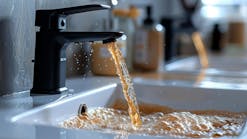Phathutshedzo Mashele is technical service & development engineer for DuPont Water Solutions. Mashele can be reached at [email protected].
Across the globe, elevated levels of fluoride in drinking water are becoming a significant threat to public health. Although limited amounts of fluoride are safe in water supplies, many regions have reached dangerously high levels. Removal and treatment of high-fluoride water has historically been difficult and expensive, but is generally preferred to importing costly and unreliable supplies from outside sources.
While these challenges are global, it is particularly prevalent in Africa’s Eastern Rift Valley, which spans from Ethiopia to Tanzania. Because of high fluoride levels, local populations are at high risk for skeletal problems, including significant muscle impairment, pain and changes in bone structure—effects that can be considerably worse in children, causing significant problems in neuronal and cognitive development with age.
A Global Challenge Localized
Situated in the heart of the Rift Valley, Kenya faces significant obstacles in delivering potable water to its residents, with only nine of the 55 public water service providers in the country able to offer continuous supplies. 41% of Kenya’s 46 million residents have relied on unimproved water sources, such as ponds, rivers and shallow wells to meet their most basic human need. These raw water sources and the high level of fluoride within them have left 30 million Kenyans living with dental and skeletal fluorosis.
In the Kasarani region of the capital, Nairobi, the Little Sisters of St. Francis (LSOSF) run a school facility and hospital training center, which serves more than 6,000 people every day. The volume of students and patients places high demand on the facility, requiring reliable access to clean water not only for drinking but to serve all day-to-day operations. Though LSOSF previously acquired their water from the city supply, the distance combined with numerous breakages led to contamination that yielded waterborne diseases and water-related illnesses.
Collaborate to Innovate
In an attempt to access an underground reservoir in search of clean water, LSOSF initiated a borehole, but quickly discovered that the water source contained concentrations of fluoride that far exceeded the global standard for safety. To solve this issue, LSOSF reached out to the U.S. Agency of International Development (USAID) and its Kenya Integrated Water, Sanitation and Hygiene (KIWASH) project for assistance.
KIWASH, which strives to improve water and sanitation development in underserved communities in Kenya, formed a cooperative team with DuPont Water Solutions (DWS) and Davis & Shirtliff, a regional East African contractor, to commission the installation of a filtration system that would remove fluoride from the drinking water source.
Davis & Shirtliff, a leader in the search for fluoride removal solutions with decades of experience in Kenya’s market, provides deep familiarity with the challenges facing the local water sector. The company has also used DWS technology in a wide range of projects, uniquely positioning them to select the most advantageous products for an effective fluoride removal system. With Davis & Shirtliff’s knowledge and DWS’ global and technological expertise, the team was well aligned to implement a long-term solution.
A Simpler System
The partners involved constructed a new facility using USAID’s direct infrastructure investments, including pipeline expansion, an efficient pumping system and the construction of water kiosks, along with DWS’ high-recovery water purification technologies. The system uses ultrafiltration units for pretreatment of the water, removing silt from the borehole water and making it suitable to enter the fluoride removal system. A nanofiltration train then separates the water with the remaining fluoride molecules isolated on one side of the membranes and the pure water on the other.
These advanced water treatment technologies help create a simpler system, ultimately requiring lower energy levels and higher rates of recovery. USAID and DWS also offered training while onsite to ensure sustainability and continued effectiveness of the project.
“This was a challenge that could not be easily addressed by USAID alone,” said Joe Sanders, chief of party for USAID’S KIWASH. “In collaboration with [DuPont]Water Solutions and LSOSF, we were able to meet the immediate needs of the hospital and help improve the quality of life for the broader community.”
In just seven months, the facility produced approximately 2.8 million gallons of clean water, effectively reducing incidences of waterborne diseases while improving economic efficiency for the hospital and the community. Residents who previously paid up to four to five dollars for 20 liters of water now pay only 40 cents.
Soon after startup, LSOSF began providing water to the community through kiosks, using a water ATM to automate the process and allow residents to purchase clean water 24 hours a day. Fifty to 75 local residents now use the kiosks daily as their primary water source.
“It is wonderful to see our patients enjoying safe, clean water, and our pupils are very excited,” said Sister Esther Waithera of LSOSF. “Once the parents became confident in our water quality, our school quickly filled to capacity with new students.”
A Model for the Future
The public-private partnership has become a benchmark for other communities and organizations in the region. LSOSF regularly welcomes visitors who are interested in learning about the clean water program in hopes that it will be implemented widely across East Africa and regions facing similar challenges.
“I’m confident that nanotechnology will likely become the solution of choice to address fluoride removal in this region,” said Phillip Holi, technical director for Davis & Shirtliff. “Without water, no economic activities can go on.”
This clean water project serves as a prime example of how technology and expertise can be combined to encourage the growth of communities and the advancement of human progress. Developments of a similar scope have proven to be key to creating a more equitable, long-term water future.



